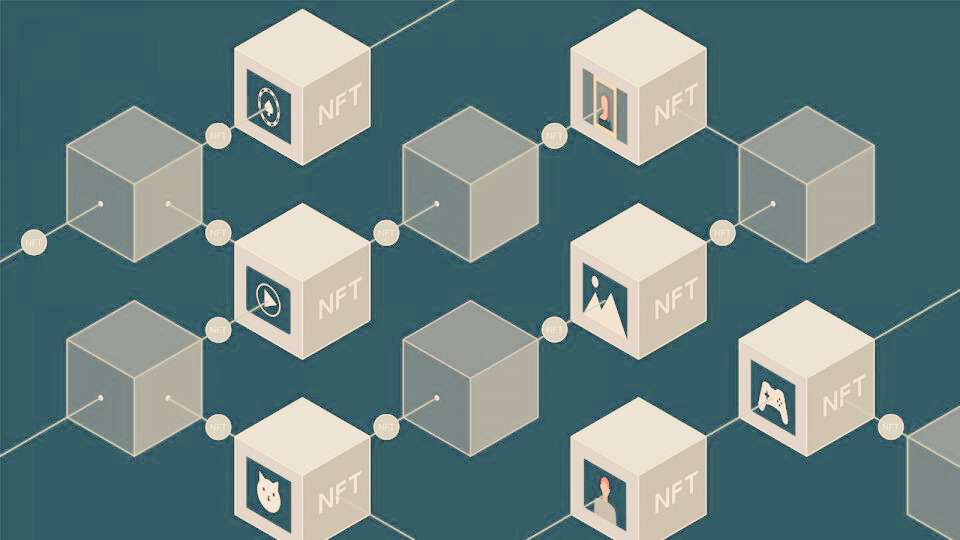Its potential extends across industries from finance to healthcare.Blockchain: Revolutionizing Data Security and Transparency
Introduction
Blockchain, a decentralized digital ledger technology, has gained immense popularity due to its potential to transform multiple sectors through its security, transparency, and decentralized nature. Initially devised to support the cryptocurrency Bitcoin, blockchain has since expanded into various industries, proving valuable for everything from secure transactions to data protection and supply chain monitoring. Its core characteristic—a decentralized ledger that allows for the secure, transparent, and immutable recording of information—makes it a unique and innovative technology for addressing modern challenges in data handling, trust, and verification.

How Blockchain Works
Blockchain operates on a peer-to-peer network, making it decentralized and removing the need for intermediaries. A blockchain consists of a series of “blocks,” each containing a list of records, known as “transactions.” Each block is linked to the previous one through cryptographic hashing, forming a secure “chain.” The process begins with a transaction, which is verified by multiple network participants, known as “nodes.” After the transaction is validated, it’s grouped with others and added to a new block. Once a block is added to the chain, it becomes virtually immutable, ensuring that the data remains secure, as altering one block would require changes to all subsequent blocks, an action nearly impossible without control of the majority of the network.

Blockchain’s Key Features
Decentralization: Traditional systems store data on centralized servers, which can be susceptible to attacks and fraud.This decentralization enhances security and creates a trustless environment where users don’t need to rely on a single party.
Transparency and Immutability: Each participant in a blockchain network can view the history of transactions, making it incredibly transparent. Immutability, another significant aspect, ensures that once data is recorded, it cannot be altered. This feature is crucial for preventing fraud and ensuring data integrity.
Each block has a unique hash, linking it to the previous block, which forms a chain. Changing one block would require re-mining all subsequent blocks, a computationally prohibitive task.
Applications of Blockchain Across Industries
Finance and Banking: Blockchain was initially developed to support Bitcoin, but its applications in the financial sector have since expanded significantly. Through decentralized finance (DeFi), blockchain enables direct transactions without banks or financial intermediaries, lowering transaction fees and facilitating faster transfers. Blockchain is also used for secure digital identities, KYC (Know Your Customer) processes, and fraud prevention.
Supply Chain Management: Blockchain offers transparency and traceability, helping track products throughout the supply chain. Each participant in the supply chain can view the product’s journey from origin to delivery, improving accountability and reducing fraud.
Healthcare: In healthcare, blockchain ensures the security and privacy of patient records. Patients and authorized providers can access a single, comprehensive medical record without the risk of data being altered or accessed without permission.
Voting and Governance: Blockchain can enhance transparency and trust in voting systems. Blockchain-based voting systems are resistant to tampering, providing a more secure method for conducting elections and ensuring voter anonymity and data integrity.
Real Estate: Blockchain technology enables secure and transparent property transactions. By recording ownership and transaction history on the blockchain, it simplifies property transfers, reduces fraud, and increases transparency.

Challenges and Limitations
Despite its potential, blockchain has its challenges:
As the number of transactions grows, the network can slow down, increasing costs and reducing efficiency. Various solutions, like sharding and layer-2 protocols, are in development to address these issues.
Energy Consumption: Mining on blockchain networks, particularly those using Proof of Work (PoW) like Bitcoin, is energy-intensive. PoW involves solving complex mathematical problems to validate transactions, consuming significant power. Alternatives like Proof of Stake (PoS) aim to make blockchain more sustainable.
Regulatory Uncertainty: Blockchain’s decentralization poses challenges for regulators. Governments worldwide are grappling with how to oversee blockchain applications without stifling innovation. Regulations are essential to protect users, but too much restriction can limit blockchain’s potential.
Security Vulnerabilities: Although blockchain is generally secure, it is not immune to attacks. For example, in a “51% attack,” a malicious party could gain control of the majority of the network’s hashing power and alter transactions. While rare, these vulnerabilities raise concerns aboutblockchain’s reliability in high-stakes scenarios.
Future of Blockchain
The future of blockchain holds promise, with emerging trends aiming to overcome its current limitations. Hybrid blockchains, combining public and private blockchain features, provide more flexibility and control for specific applications. Additionally, “smart contracts,” self-executingcontracts with pre-set terms directly coded into the blockchain, are changing industries by automating transactions and reducing the need for intermediaries.
Further, blockchain is playing a significant role in the rise of decentralized applications (DApps) and decentralized autonomous organizations (DAOs). These innovative uses rely on blockchain for governance, allowing members to propose and vote on changes without central authority. Such developments are paving the way for decentralized, transparent ecosystems in industries ranging from gaming to corporate governance.
Conclusion
Blockchain technology has undoubtedly revolutionized data security, transparency, and trust across sectors. Although challenges like scalability, energy consumption, and regulatory issues exist, the continued development of blockchain applications and innovations like smart contracts, DApps, and hybrid blockchain models promise a bright future. Blockchain’s potential to enable secure, decentralized, and transparent systems could reshape industries and the way society approaches data integrity and trust, underscoring its enduring impact and relevance in a digital era.











